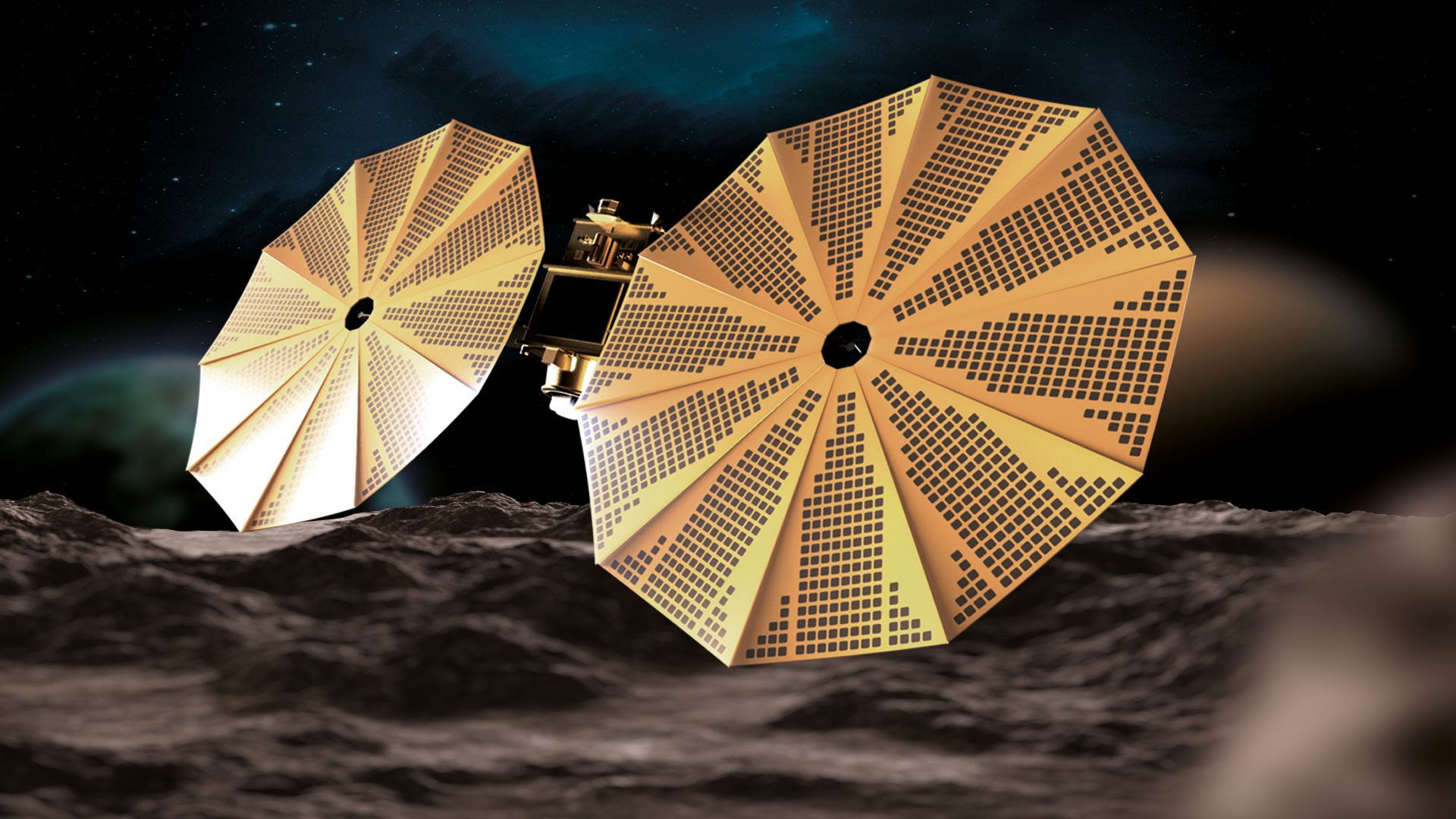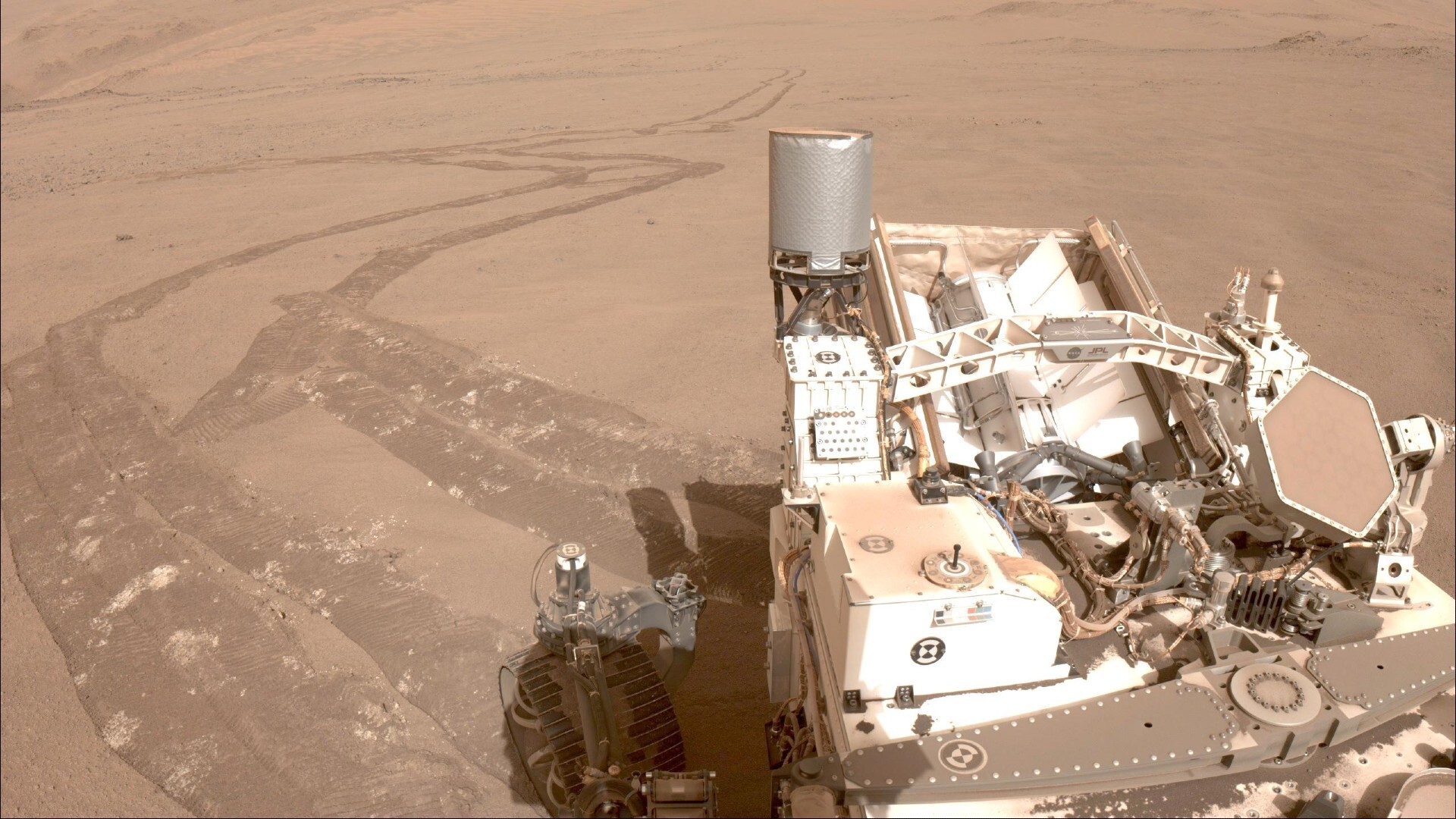UAE to land a probe on an asteroid between Mars and Jupiter in 2034
We just got new details about the UAE's ambitious asteroid-belt mission.

An asteroid that may host life's building blocks will get a visit from a United Arab Emirates (UAE) spacecraft about a decade from now, if all goes according to plan.
In October 2021, the UAE announced that it plans to launch an ambitious mission to the asteroid belt in 2028. That mission will visit seven different space rocks, and even land on one of them, an asteroid called (269) Justitia.
On Sunday (May 28), the nation gave us some new information about this bold asteroid mission — including its name, the Emirates Mission to the Asteroid Belt (EMA).
"EMA is a key component of the UAE National Space Strategy and has one over-riding goal — the creation of viable and rewarding employment opportunities for young Emiratis for generations to come," Sarah Al Amiri, chair of the UAE Space Agency, said in a statement.
"Emirati learning, knowledge transfer and innovation lie at the heart of EMA and our growing private space sector will contribute over 50% of the overall contracted mission, forming a major global commercial space opportunity," Al Amiri added.
We also learned on Sunday that the EMA spacecraft will be named after Sheikh Mohammed bin Rashid Al Maktoum, the vice president and prime minister of the UAE and the ruler of Dubai: It will be called the MBR Explorer.
Related: UAE's ambitious asteroid mission will tour 7 space rocks
Breaking space news, the latest updates on rocket launches, skywatching events and more!
The MBR Explorer will visit its first asteroid in 2030, and will follow an orbital path allowing it to pick up speed from several planets along the way. (It's common for spacecraft to get such "gravity assists" from worlds like Venus or Mars to save on fuel, and to do side observations to test their instruments.)
After passing by six asteroids, the mission aims to touch down upon Justitia in 2034 with a small lander that will deploy from MBR Explorer. Justitia may have organic molecules on its surface; organics are the building blocks of the complex molecules that could form life in the right circumstances.
More generally, scientists seek water and organics all over the solar system to better understand how life arose on Earth. That search may be especially meaningful on Justitia, which may have formed closer to our planet and then migrated out to its current position in the asteroid belt between Mars and Jupiter, scientists say.
The rest of the mission manifest includes flybys of the asteroids (10254) Westerwald, (623) Chimaera, (13294) Rockox; (88055) 2000 VA28, (23871) 1998 RC76 and (59980) 1999 SG6, all meant to represent "different classes of asteroid with varied compositional types," UAE Space Agency officials said in the same statement. Justitia and Chimaera are around 31 miles (50 kilometers) in diameter, with the remaining asteroids less than 6 miles (10 km) across each.
Four science instruments have been announced to probe the geology, composition and structure of the asteroids: a high-resolution camera, a thermal infrared camera, a mid-wavelength spectrometer and an infrared spectrometer.
The UAE Space Agency was formed in 2014 and is one of the youngest space agencies in the world; by comparison, NASA was formed in 1958 from previous U.S. government groups. The UAE's Hope Mars orbiter, which launched in 2020, was the first Arab spacecraft to reach the Red Planet, making it on the first try, no less.
The first UAE astronaut, Hazzaa al Mansoori, launched on a short mission to the International Space Station in 2019. There is another UAE astronaut in orbit right now: Sultan Al Neyadi, who launched to the orbiting lab in March on SpaceX's Crew-6 mission.
Editor's note: This story was updated at 11:20 a.m. EDT on May 30 to replace a quote from Sheikh Mohammed bin Rashid Al Maktoum with one by UAE Space Agency Chair Sarah Al Amiri. The sheikh's quote was in an early version of the UAE press release but was removed from later versions.

Elizabeth Howell (she/her), Ph.D., was a staff writer in the spaceflight channel between 2022 and 2024 specializing in Canadian space news. She was contributing writer for Space.com for 10 years from 2012 to 2024. Elizabeth's reporting includes multiple exclusives with the White House, leading world coverage about a lost-and-found space tomato on the International Space Station, witnessing five human spaceflight launches on two continents, flying parabolic, working inside a spacesuit, and participating in a simulated Mars mission. Her latest book, "Why Am I Taller?" (ECW Press, 2022) is co-written with astronaut Dave Williams.
